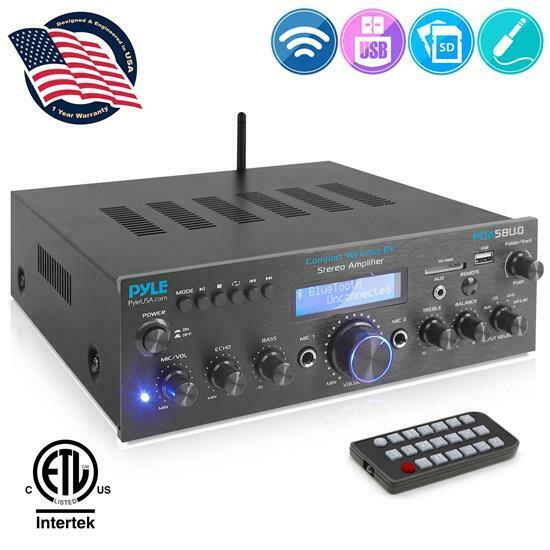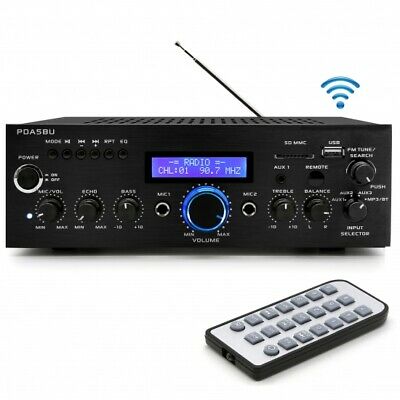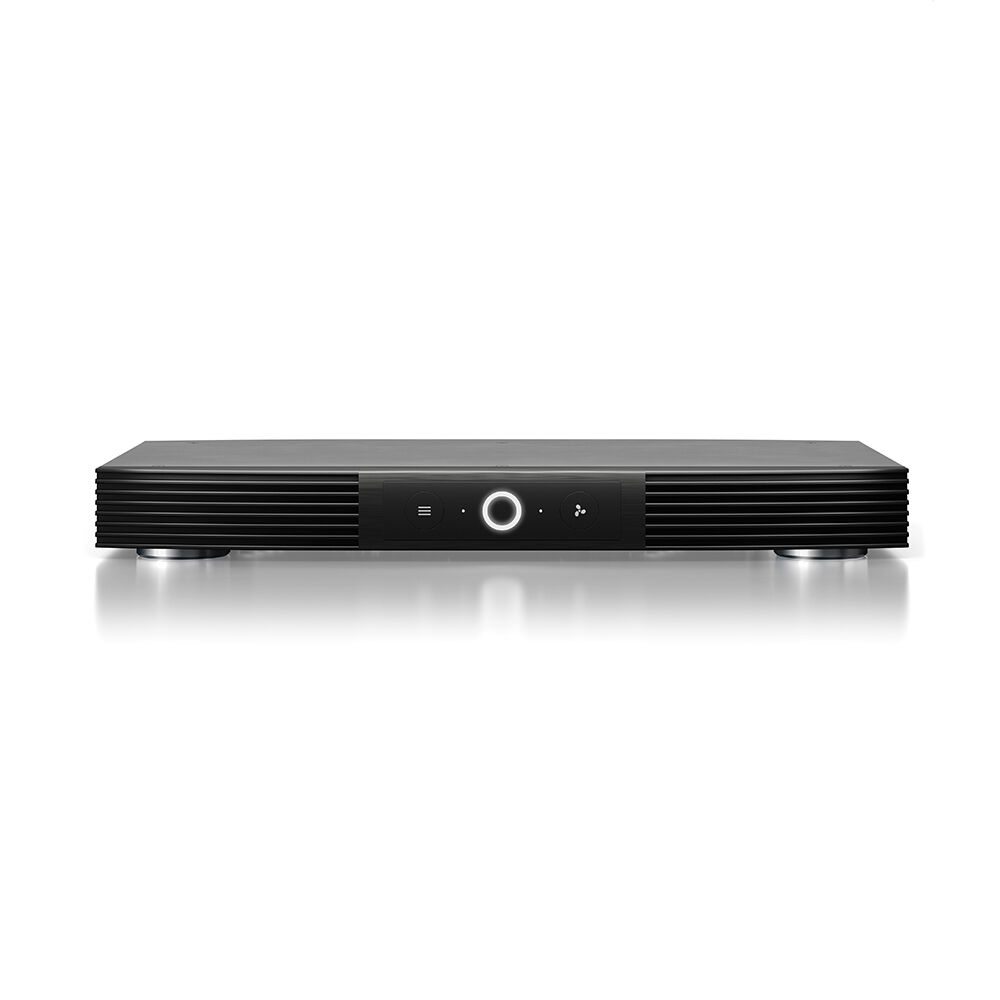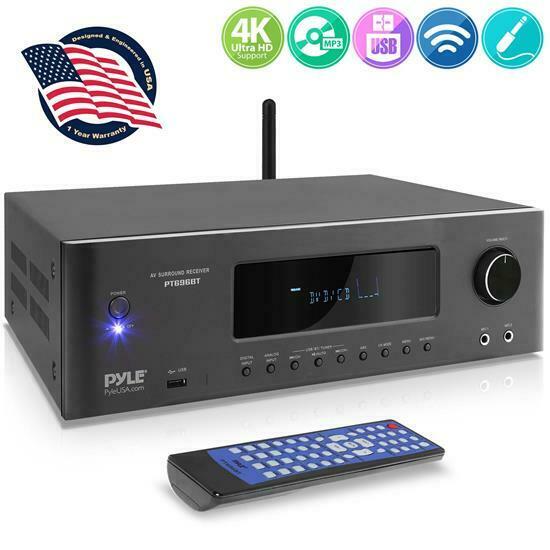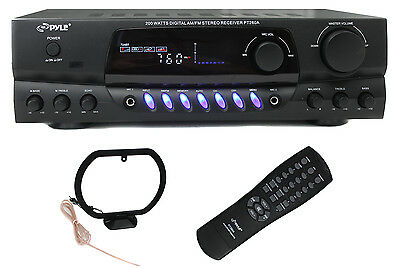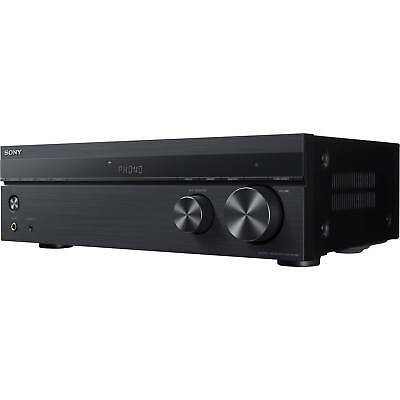-40%
Integra DTR-9.1U2 910-watt 8-channel THX-Ultra2 Receiver 00 List ! ONKYO
$ 158.39
- Description
- Size Guide
Description
PREOWNED - 00 LIST! - FULLY TESTED - INCLUDES ORIGINAL MANUAL, POWER CORD, REMOTESJust a couple of years back using "high-end" and "receiver" in the same sentence would have been deemed sacrilegious by any audiophile. No one back then would have thought that a receiver would be on the cover page of a magazine like Stereophile. How times change! Not only has that happened, several companies, like McIntosh and B&K, known for making separates, have taken the plunge into this new market segment. After all, why can't a receiver sound good? And if they can sound good, then the price you pay for the performance and the plethora of features makes for a "high-end bargain"! The Integra 9.1 joins this select group of high-end receivers that sound really great.
Can you say "Features Galore"?
The Integra is THX Ultra Certified. It boasts 7 channels of amplification, each channel rated at 130 Watts minimum of continuous power into 8 , from 20 Hz to 20 kHz with no more than 0.05% THD. The amplifiers use WRAT technology, a buzzword for wide bandwidth - 100 kHz in this case - and low negative feedback.
Every imaginable audio format can be decoded by this receiver; the list includes: Dolby Digital, Dolby Pro Logic II (DPL-II), MPEG, DTS, DTS-ES, DTS-ES Discrete 6.1, and THX Surround EX. If a new format comes along, and they just keep coming, you can upgrade the unit's flash memory using the RS232 port on the back. Our review unit had been upgraded to DPL-II. The upgradability cannot be emphasized enough. So many formats and features are constantly coming out, it is an important feature to have, at least for this kind of money. THX Ultra 2 has just been announced, and I imagine there will be an upgrade to the DTR-9.1 that will come along in the future. Since the DACs are 24/192, I suspect it would be possible to upgrade this unit for digital decoding of DVD-A, if the manufacturers ever agree on a digital output standard for DVD-A players. This particular review unit was used in our Benchmark event, held last June, and the guys say it is one of the best sounding receivers they have ever heard.
The standard set of THX enhancements like Cinema Re-Eq, Timbre Matching, Adaptive Decorrelation, and Bass Management are also provided. Several DSP modes are included for those wishing to experiment with their stereo recordings. If you must manipulate your music, stick with Pro Logic II (DPL-II). While Pro Logic II is not perfect either, I find it less artificial. To top it all, 192kHz/24-bit D/A converters are used for all eight channels.
Look at the rear, and you'll find a plethora of input/output connections. There are 8 digital inputs in all: 5 with coaxial jacks and 3 with optical jacks. There is an AC-3 RF input too, a rarity these days. There are also 2 digital outputs: 1 coaxial and 1 optical. On the analog front, the receiver provides 10 audio inputs, 6 of which are linked to video inputs, and 4 audio outputs, 2 of which are linked to video outputs. In addition to these stereo analog inputs/outputs, there is a DB-25 input that can be used with the multi-channel output from DVD-Audio and SACD players - the receiver comes with a 6-channel RCA-to-DB-25 cable! Pre-out jacks are provided for each channel, in case 130 watts per channel is not enough for you (unlikely).
There is no paucity of video inputs/outputs either. The receiver sports 6 video inputs and 2 video outputs, each having both the composite and S-Video variety. In addition, there are 3 sets of component video inputs and 1 set of outputs (component video requires 3 jacks). If you are running out of component inputs on the back of your television, these will come in handy. The bandwidth of these connectors is 50 MHz, well above the average. But, if your situation does not require you to use HD switching, skip it - it is always better to send the signal un-compromised to the television anyway.
What else? A set of audio, analog only, and video jacks are provided for Zone 2 capability. A 12-volt output terminal is also present to control external devices. And last, but not least, there is an AM/FM tuner.
Setup
With all that this receiver has to offer, setting it up may sound intimidating. I am happy to report the contrary. Setting it up was quite uneventful, which is to say that the controls on the receiver and the on-screen menu are well laid out. The instruction manual is well written, although I must confess that like most reviewers, I read it after I had configured the receiver.
I started out by setting up the speakers.
Speaker setup entails:
Setting the speaker sizes. The option here is either large or small. Since this is a THX Ultra certified player, setting the speaker size to small sends all frequencies below 80 Hz to the subwoofer. I find this THX mandate to be very limiting and hope that this requirement is relaxed in the future. I would like to see a variable setting from 40 - 80 Hz, in 10 Hz increments. High end processors have this feature, and we need it for receivers now.
Setting the distance of each speaker relative to the listening position. This is done to time-align the sound from all the speakers at the listening position.
Level calibration. The loudness of each speaker is calibrated to a fixed sound-pressure-level. The receiver has a test signal that cycles through all the channels.
Limiting the bass peak level. This is done to prevent the subwoofer from damage, not to mention your ceiling joists.
LFE level setup. This compensates for the difference in loudness inherent in the various audio formats.
Next, I set up my inputs. Each input on the front can be connected to any input on the rear panel. I like this flexibility. In addition, each input can be configured to decode a particular format, like DTS or PCM, or be set to "AUTO" where the receiver performs the format detection automatically. I set mine to "AUTO", although as you will read later in the article, you may want to fix the input to PCM if you are only listening to CDs. For each input, you also have the ability to synchronize the audio and video by delaying the audio as much as 30ms. This way, you don't have to feel as if you are watching a dubbed movie!
The Remote
The supplied remote is of the universal variety.
It can control up to 8 devices, although commands for each device must be programmed into the remote - it would have been nice had the remote come pre-programmed with some device codes.
And yes, the remote is backlit. Yea! This is a must on any remote that I use! After all, with all the complexities of a receiver, how am I supposed to remember the position of every key on the remote in the absence of light? This point seems to escape some of the manufacturers.
The buttons on the remote are well laid out. I like the fact that I can access any input with the press of a button. I am not a fan of cycling through inputs, especially on a receiver that has 10 input selections! The remote also has the capability of recording Macros. With the increasing complexity in a home-theater, macros are very useful. I have several programmed into my Pronto, and I use them regularly.
I only have a couple of gripes about the remote. One is that the location of the "On", "Standby" and "Light" buttons are too close together. There were a couple of times where I pressed the "Standby" button when I meant to press the "Light" button. The other is that the buttons for selecting surround sound modes are shared with numeric keys, and the numerals are painted on the buttons. As a result, when the remote is backlit, the numeric values are visible but the surround modes are not. I would have liked things to be the other way around. In general, though, I liked the remote.
Let it Sing!
When I first received the Integra for review, my plan was to plug everything in and then play a CD to make sure that I could hear something through the speakers, and critical listening would commence later. So I started out with Enya to whet my appetite. Right away I was struck by the smooth, silky mid-range. The vocals sounded delightful. I felt compelled to play a few more CDs immediately. With every CD, my impression remained unchanged
:
the mid-range was excellent, the bass was good, although not as tight as I have ever heard, and the highs were crisp, never sounding edgy.
Over the course of the next few weeks, I listened to a wide variety of music ranging from Dead Can Dance ("A Passage In Time"), to Patricia Barber ("Café Blue"), to Mazzy Star ("So Tonight That I May See"), to Ravi Shankar ("Inside the Kremlin"). My initial impressions continued.
To test how well it would do with some bass heavy tracks, I played "The Big Picture" and the "1812 Overture" from Telarc. The former CD has soundtracks from several movies including the gut wrenching launch sequence from Apollo 13 that will send most subwoofers into orbit. The latter CD has loud cannon shots towards the end of the symphony. I played both of these CDs with the volume cranked up and did not hear any signs of compression.
When I switched CDs, I occasionally noticed a delay of a second or two before sound would come out of the speakers. I believe that this had to do with the "Auto" mode that I had set the digital input to. In this mode, the receiver automatically detects the format of the incoming signal, which is good; unfortunately, it takes it about a second or two to do so. If you do not want to miss the first two seconds on a CD, set the input to "PCM" and you won't miss a note!
Another possible benefit of PCM mode is that you can enable "Upsampling". However, I could not tell much difference between when it was on or off. I am not even sure that I could tell the difference in a blind test. Your mileage may vary, so give it a try.
The Integra does not go overboard with DSP modes, which is fine with me because I am not a huge fan of these synthesized modes. I did listen to some CDs in all of the modes, and I liked Pro-Logic II the best (DPL-II is not classified as a DSP mode though). However, even in Pro-Logic II mode there were a couple of times when I heard the guitar come from my surround speakers, when it should have been in the front!
I was really happy with the Integra's performance on movies. The "Auto" detect feature worked flawlessly. I saw a fair number of movies during the review period, and the receiver never failed to lock on to the correct format. The times when I thought it didn't, it turned out that the DVD player had defaulted to "Dolby Surround". All the THX modes worked as advertised, and the decoding was about as good as it gets. I was particularly impressed with the sense of involvement while watching the first 15 minutes of "Saving Private Ryan". The bullets were flying all over me and I felt like I was sitting in the middle of the shooting frenzy.
The 7.1 Experience
In an effort to provide an improved 360
0
sound field, two new surround formats have emerged: DTS ES and THX EX. In both formats, the improvement results from the use of one additional channel, the rear center. The Integra goes a step further and uses 2 channels in the rear (hence the 7.1, instead of 6.1). The desired placement for these 2 speakers is behind the listener, and in line with the 2 conventional surround speakers. Both DTS ES and THX EX audio streams are decoded and played back through the 7 main speakers. How do these formats sound?
To evaluate these new formats I used the "Gladiator" DVD, which features a DTS ES track, and the "Star Wars - Episode I" DVD, which features a THX EX track. Both these DVDs have a mighty fine 5.1 audio mix to begin with, although there were some benefits through the use of the additional channels. During the pod race, for example, the sense of space was increased, and the directional cues in the surround channels were more precise. In "Gladiator", when Maximus throws the sword to kill one of his captors, I could discern the location of the sword as it made its way to the target. In the stadium scenes, I felt surrounded by the cheering crowd as the sound came both from behind and from the sides. The sense of space and realism seemed a touch reduced when watching the same scenes through the conventional 5.1 speaker array.
One minor quirk I had while watching the Star Wars DVD was that the receiver did not recognize the EX flag even though THX processing was on and the EX detection was set to AUTO. I had to manually turn EX decoding on. This is something that will probably be corrected in a future software upgrade.
THX Ultra2
THX recently announced the Ultra2 specification. One feature touted by this specification is 7.1 decoding from 5.1 originals. In other words, 2 additional channels are synthesized. While the Integra 9.1 is not Ultra2 certified, it does have 7.1 channels of amplification and the software necessary to drive the 7 channels.
Conclusion
What's not to like about the receiver? It is software upgradeable, has 7 channels of amplification, has excellent DACs, the mid-range is superb, and it will decode all the audio formats that are out there. If you are looking for a receiver at this price-point, spend some time with it at your dealer's shop. You won't be disappointed. I sure liked it.



